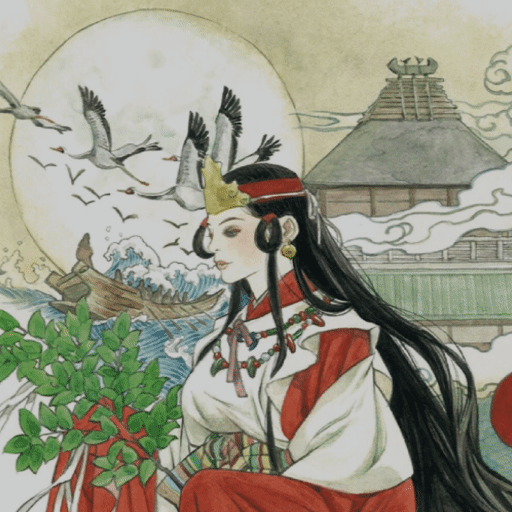
By HIMIKO: Himiko, Shaman Queen of Wa
Today we learned more about how to effectively use the Muhlenberg library website to look up research articles and books instead of having to pay for them online or find things we never thought to be finding before. This portion of the class period; however, was only a small portion of what we did for the period. We got into groups of 2 to 4 and learned about one of the most notorious Japanese rulers, Queen Himeko. In my group, I got to look at the article, “Rebranding Himiko, the Shaman Queen of Ancient History” by Laura Miller. This article was one of the most scholarly out of all the six articles given out in the groups. It was one of the only articles that was on a database called project muse and was peer-reviewed. The peer-reviewed article gave an in-depth analysis about Queen Himeko without making it jargon heavy. The article is very informative and leaves the reader thinking that Queen Himiko represents something different with every new generation. She becomes what the new generation wants her to be. In future projects I would definitely use Muhlenberg library as the go to place to learn all that there is about a subject, especially since it is for free.
In addition to learning about Queen Himiko’s connection to modern society she is also connected to divinity. Himiko’s divinity as the descendant of the sun goddess, Amaterasu, can be traced back to the creation myth found in the second chapter of the textbook which dealt with the Japanese creation story of the world. The whole story itself is interesting and very entertaining. However, it is fascinating that even in their creation myth there is gender inequality present with the creation deities no less. In the story there is a section on page 16 where Izanami speaks before Izanagi does; this leads to disastrous effects where a leech-child and an island of foam were born. They both go to the heavenly deities for guidance and the deities said, “Be- cause the woman spoke first, the outcome was not good. Descend once more and say it again.” Thus, in the creation story the patriarchal view that the man must go before the woman is shown. Since we have not learned much about modern Japan yet, this gender inequality of the story brings up the interesting question of how this story is viewed in the eyes of modern day Japanese?
Lastly, not only has religion played an important part in Japanese history but their culture, ethnic distinctions, and traditions. The origin of Japanese culture can be found in the Upper Paleolithic era. Then comes Jōmon Japan where the first reports of pottery being used. After Jōmon Japan comes the Yayoi-Kofun period marked by the distinctive plain coarse pottery type. It is interesting that so much can be gleaned about Japan’s history from their pottery. However, it makes me wonder if there is more religious significance tied to these pots that allows others to glean so much information about the past from them.
Materials Consulted:
Aikens, Melvin C. “Origins of the Japanese People.” In Japan Emerging: Premodern History to 1850, edited by Karl F. Friday. New York, NY: Routledge, 2018. https://muhlenberg.on.worldcat.org/oclc/787849954. 11 pages (pp. 55-65)
Shirane, Haruo. Traditional Japanese Literature: An Anthology, Beginnings to 1600. Abridged ed. Translations from the Asian Classics. New York: Columbia University Press, 2012. PDF, printed pp. 15-21 (Remember to use the login and password you can find on the Canvas page– ask your browser to remember them for the semester)
Miller, Laura, –. “Rebranding Himiko, the Shaman Queen of Ancient History.” Mechademia 9 (2014): 179–98.
Leave a Reply